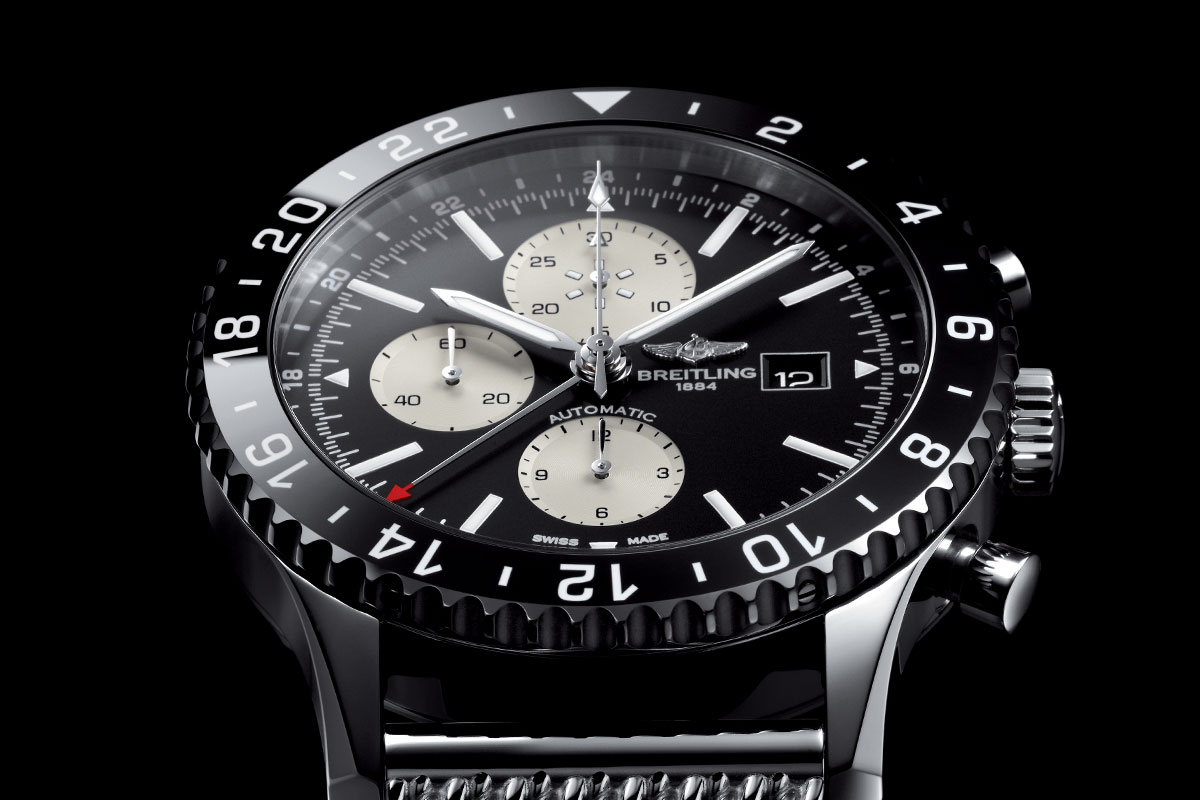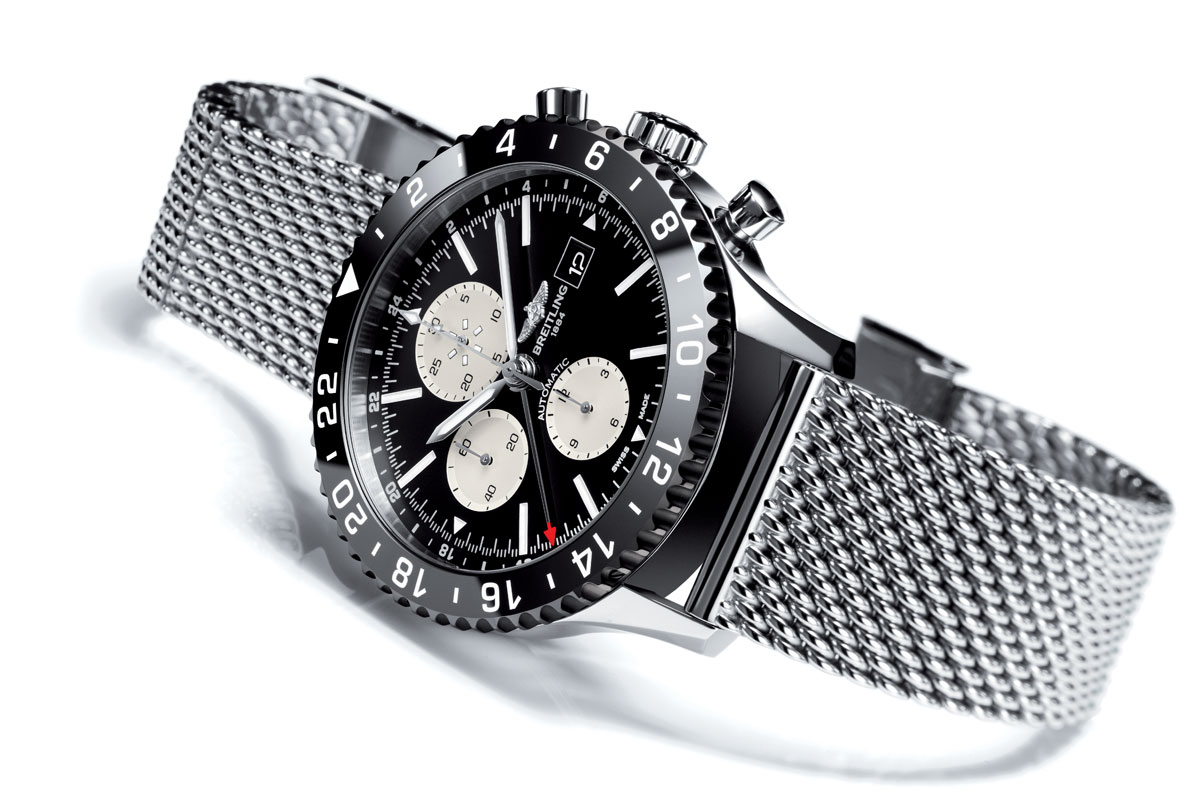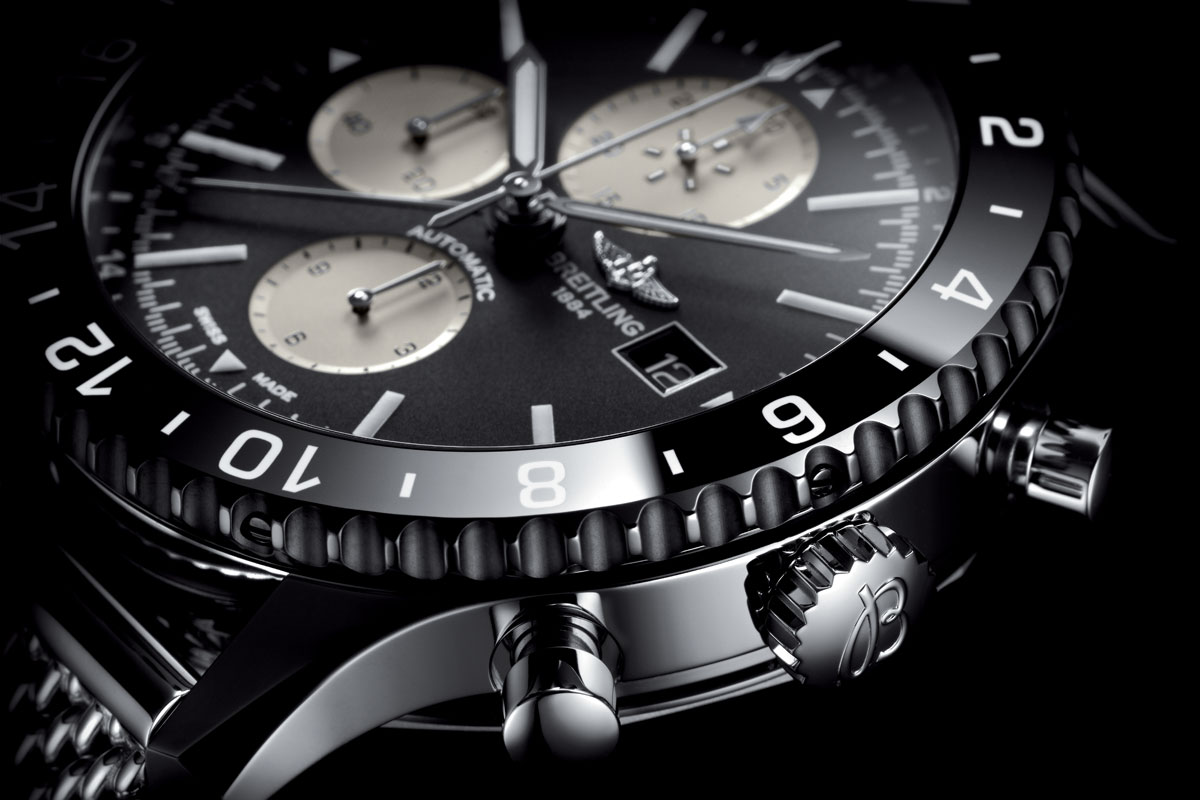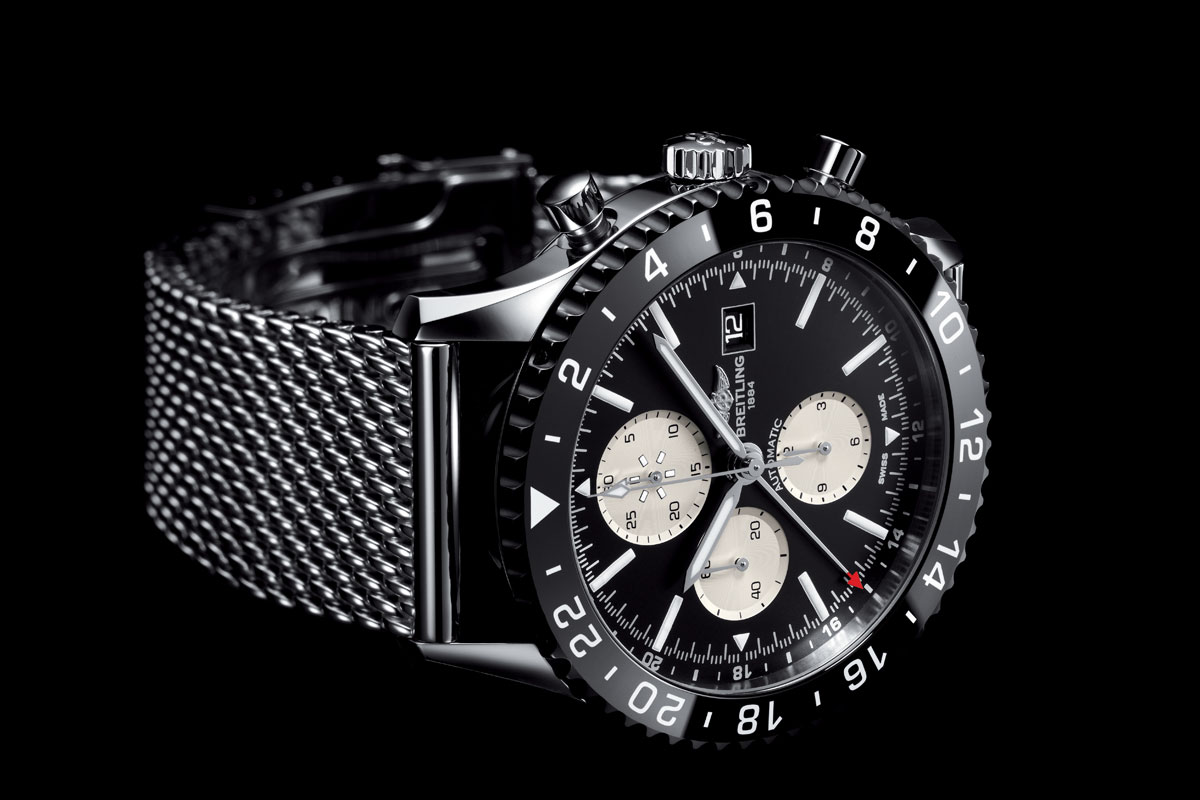Pre Baselworld 2015: Introducing the Breitling Chronoliner

There are few companies in the watch industry that have the impact Breitling has. It is a well-known fact among watch aficionados that the company might be solely responsible for creating the shape and form of the chronograph wristwatch as we know it today. In parallel the name of the company is clearly interlinked with the world of aviation, and the new Breitling Chronoliner, a chronometer-certified chronograph to measure flight times, having a second timezone display in 24-hour mode to juggle time differences around the planet, proves exactly that.
A Short History Lesson.
Breitling was founded in 1884 in Saint-Imier, in the Bernese Jura, by Leon Breitling, and right from the start, they specialized in chronographs. After a few years, in 1915 the company introduced the first wrist-chronograph watch (all functions controlled by the crown), while in 1923 it perfected this design by separating the stop/start function from that of the resetting (combination of crown and a single pusher at 2’ o clock). In 1934, this design went a step further by adding of the second pusher at 4’ o clock for resetting the chronograph. The form of the chronograph had been solidified.

The innovations continued, and in 1936, the Royal Air Force became affiliated with the company by using its chronographs. In 1942 Breitling introduced the first watch with a circular slide rule, the Chronomat. During the 1950’s and 1960’s Breitling accompanied the boom in civilian aviation by equipping many airlines propeller planes and subsequently jet planes with its onboard chronographs. The brand thus naturally came to be known as the ‘official supplier to world aviation.’ The legendary Navitimer was introduced in 1954. This iconic chronograph was the result of a request made by the Aircraft Owners and Pilots Association (A.O.P.A) to have a ‘wearable chronograph with Navigation Computer (sliderule).’ Pilots all around the world wore Breitlings and one of them was Scott Carpenter, a U.S.A.F fighter pilot. He made the company famous when in 1962 he asked for a 24 hour dial layout and wore the Navitimer Cosmonaute on his trip into space (Aurora 7).

The innovations have continued through to the present day (Emergency watches & B01 caliber) since aviation professionals need reliable and high performance instruments just like the early 20th century aviation pioneers. Aviation has enjoyed spectacular progress. Planes’ performances have reached dizzying heights. The instrument panels featuring pointer-type counters and manual controls of the Super Constellation aircraft and the first jets have given way to computer screens, and fly-by-wire systems. But two things have remained unchanged: flight captains still wear the same prestigious uniform; and a Breitling chronograph continues to sit proudly on their wrist.
The New Breitling Chronoliner
Inspired by the brand’s own history and its own models from the 1950s and 1960s, the new Breitling Chronoliner is a modern take the iconic pilot’s chronographs. As for its modernity, it features a black bezel in scratch-resistant ceramic, with a ribbed edge for optimal grip. The numerals are in white ceramic numerals ensuring an optimal contrast.

A second timezone is indicated by the red-tipped hand that makes one full rotation every 24 hours. On the very outskirts of the dial is a 24-hour indication, so the second time-zone can be easily read from there. A third time-zone can be read from the rotating bezel with its graduated 24-hour scale.
The matte black dial with white luminescent hour-markers, and silver-white sub dials, features similar looks as the vintage Breitling AVI / Co-Pilot models that we explained in three long reads. Of course there are difference, and the first to note is the different movement, and subsequently, the different sub dial layout.

Inside ticks Breitling’s calibre 24, which is in fact an ETA/Valjoux 7750, or similar movement made by Sellita. A robust movement that Breitling has used for decades and that is officially chronometer-certified by the COSC (Swiss Official Chronometer Testing Institute) like all Breitling movements. The silvery-white sub dials are at the 12, 9 and 6 o’clock positions and register (in the same sequence): 60-minutes, running seconds and 12-hours.
Another difference with the models from the 1950’s and 1960’s is the case, or to be precise the size of the case. The polished steel case measures 48 mm in diameter, making it a rather hefty timepiece. The caseback bears the stylized planes that were a longtime Breitling signature.

Technical Specifications
- Case: polished stainless steel case, 48 mm in diameter, bi-directional ceramic bezel, water-resistant to 100 m (330 ft), cambered sapphire crystal, anti-reflective coating on both sides
- Movement: Breitling Caliber 24, officially chronometer-certified by the COSC, self-winding, 28,800 vph (equals 4Hz, which makes this a 1/4th second chronograph), 25 jewels, 2nd timezone in 24-hour mode on the dial, 3rd timezone on the bezel, date aperture at 3 o’clock position
- Bracelets: Ocean Classic (steel mesh) or Navitimer




1 response
I love this piece but I am not impressed with the shark mesh inspired bracelet. Too busy and looks cheap despite the high polish.